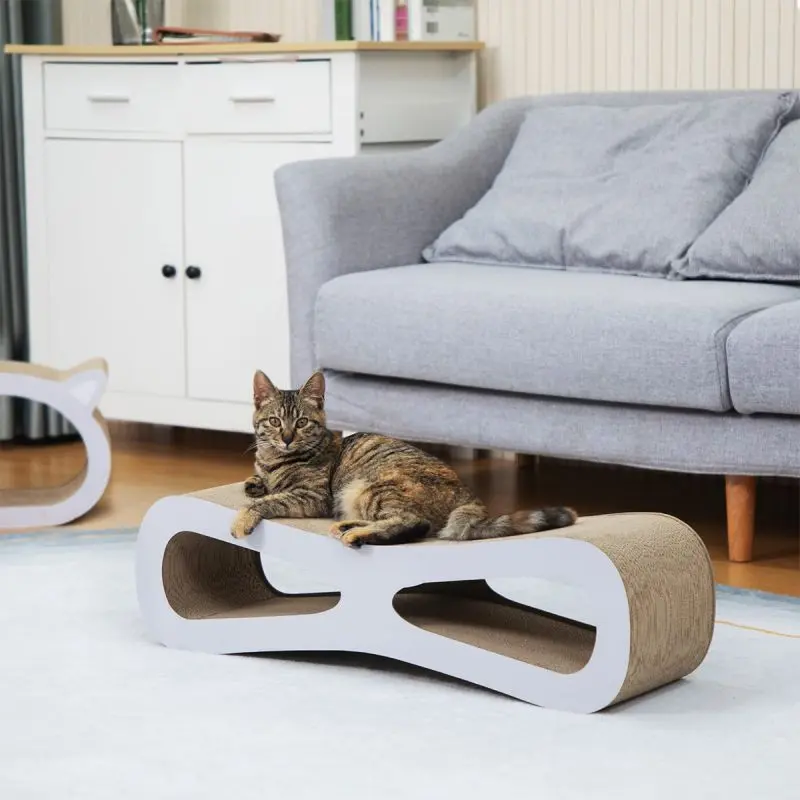Cat owners know that their furry friends love to find cozy spots to curl up and take a nap. Providing your cat with a comfortable and safe space to rest is vital to their health. One way to ensure your cat has a comfortable place to sleep is to purchase a cat bed. These specialized beds are designed to provide your feline friend with a warm and inviting space to relax. In this article, we’ll explore the benefits of cat beds and address the question of when you should declaw your cat.
The Importance of Cat Beds
Cat beds come in a variety of shapes, sizes, and materials to suit the different needs and preferences of different cats. Whether your cat prefers a luxurious upholstered bed or the comfort of an enclosed space, there’s a cat bed to suit their individual needs. Providing your cat with a dedicated sleeping area has many benefits for both your pet and you as a pet owner.
First, a cat bed provides a sense of security and comfort to your feline companion. Cats are known for their love of warmth and comfort, and a soft, padded bed can provide them with the perfect place to rest and relax. Additionally, having a designated sleeping area for your cat can help prevent them from taking over your furniture or other less suitable areas of the house.
Additionally, cat beds can help control shedding and dander. By limiting your cat’s hair loss to specific areas, you can make it easier to clean and maintain a tidy living space. Many cat beds come with removable, washable covers, making it easy for your pet to keep the bed clean and fresh.
When to consider declawing your cat
Declawing cats is a controversial topic in the pet care world. While some cat owners may consider declawing as a solution to prevent cats from scratching furniture or causing injury, it’s important to understand the implications and potential consequences of this procedure.
The decision to declaw your cat should not be made lightly. Declawing is a surgical procedure that involves amputating the last bone of each toe. This is a painful and invasive procedure that can have long-term effects on your cat’s physical and mental health. Therefore, it is crucial to explore alternative methods of controlling scratching behavior before considering declawing.
In most cases, declawing surgery is not necessary if appropriate measures are taken to address the cat’s scratching behavior. Providing your cat with appropriate scratching posts, regular nail trimming, and using deterrents such as double-sided tape or citrus spray can help change their scratching behavior away from furniture and other undesirable surfaces.
However, if despite all efforts, your cat’s scratching behavior continues to pose a serious problem, it is necessary to consult a veterinarian or a qualified animal behaviorist to explore alternative solutions. In some cases, behavior modification techniques or the use of soft nail caps may be effective in controlling scratching behavior without the need for declawing.
The age at which cats can be declawed is also an important consideration. It is generally recommended that declawing should only be used as a last resort and should not be performed on kittens or young cats. Kittens and young cats rely on their claws for natural behaviors such as climbing, playing and defending themselves. Declawing at an early age can have a significant impact on a cat’s physical and behavioral development.
Additionally, the American Veterinary Medical Association (AVMA) strongly discourages declawing of cats for non-therapeutic reasons. They stress that declawing is a major surgery and should only be considered when all other options have been exhausted and the procedure is deemed necessary for the cat’s health and well-being.
Ultimately, the decision to declaw your cat should be made after careful consideration of the cat’s welfare and in consultation with a qualified veterinarian. It is important to explore alternative solutions and prioritize humane and non-invasive methods to address scratching behavior.
All in all, providing your cat with a comfortable and welcoming space to rest is vital to their overall health. Cat beds provide your feline friend with a dedicated, comfortable place to relax while also helping to control shedding and dander. When it comes to addressing scratching behavior, it’s important to explore alternative solutions before considering declawing. Declawing should only be considered a last resort and the cat’s welfare should always be the top priority. By understanding your cat’s needs and providing them with a safe and comfortable environment, you can ensure they live a happy and healthy life.
Post time: Apr-03-2024

